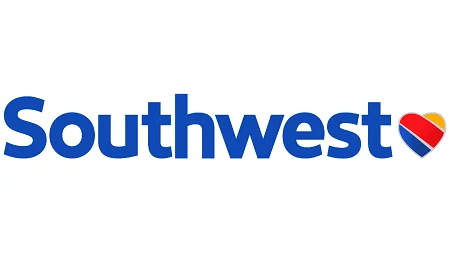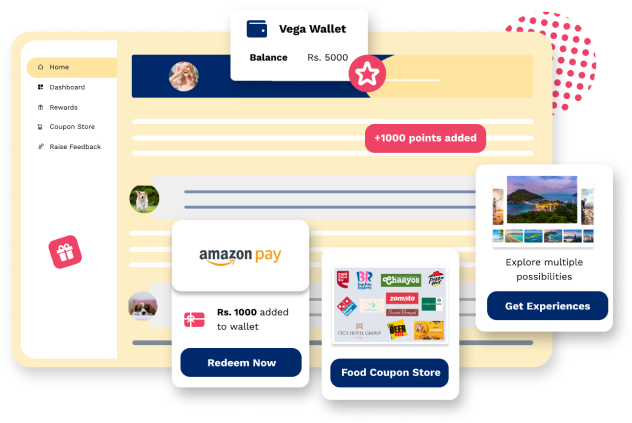Introduction
In today's fast-evolving work landscape, forward-thinking CHROs and HR leaders are shifting from elevating employee engagement to delivering compelling employee experiences. The future is here, and it's crucial to dissect the intricacies of changing employee aspirations, adopt emerging trends, and deliberate successful talent practices to future-proof engagement strategies and deliver impactful experiences.
Amplifying the employee experience has been the prime talk among HRs for years, and for good reasons: As we all know Employees are the bedrock of any organization.
But we find that there's one often overlooked aspect of the employee experience that, when done correctly, can create a domino effect leading to more excellent retention, productivity, and satisfaction—and that's Employee Empowerment.
In 2024, this is the strategy that business leaders can try that will lead to a better overall experience for them.
What does it mean to empower employees?

According to the Cambridge Dictionary, empowering someone means " giving someone authority or freedom to do something." That's broad, so let's look at empowerment from a workplace perspective.
In a working environment, employee empowerment offers workforces with apt power, resources, time, and trust to finish tasks and handle responsibilities. We've figured it out that empowerment allows employees feedback to grow in competence, skills, and confidence. It's the antithesis of micromanagement.
Empowered employees are proactive, productive, and fearless when sharing new ideas or making mistakes. In other words, they're top performers who are always willing to help and strive to improve.
How Can You Effectively Prioritize Your Strategies for Employee Empowerment in 2024
Employee empowerment needs a balance of support, responsibility, and trust without diving into negligence or micromanaging. Fortunately, striking that balance doesn't have to be complicated, especially with a few good empowerment strategies. Here are five things to look for as you curate an employee empowerment strategy.
1. Communicate your openness to new ideas
Executives empower workforces when they showcase that they really value their ideas. Not every idea will be a winner, of course, but showing that you're open to hearing employees out and willing to make potential changes to processes, culture, etc., will help empower the innovations and creativity of your workforce.
2. Empower growth with professional development
One of the foremost approach to empower the continued success of workforce is by offering them ample opportunities to develop and grow as professionals and people. Research has figured out a robust correlation between opportunities to curate and feel empowered.
Offering - mentorships, coaching, skill development, job shadowing, and even higher education to showcase to employees that companies value their progress and objectives.
3. Drive behavior through recognition
When employees are recognized for productive behaviors, they are much more likely to repeat them. This empowers employees by showing them their efforts are noticed, valued, and appreciated.

On the flip side, many employees feel they need to be sufficiently recognized; if employees put in their best effort and it goes unnoticed, chances are they aren't going to feel empowered to continue to excel.
4. Create a loop of honest feedback
As an executive, the responsibility is to assist employees to grow and learn, and an eminent part of that is giving honest feedback in a very constructive manner. This shows the workforce that when they work hard, even with some mistakes, their executives will offer them the feedback they require to continue to enhance and improve their competencies.

The latter part of the loop is open for employee feedback. They feel more empowered to take responsibility for their work when they know they can offer feedback to the manager and that they will be listened to.
5. Set clear expectations
For employees to feel empowered, they must know what's expected of them, even if they're not given exact, step-by-step instructions on accomplishing everything (remember, micromanaging is the opposite of empowerment.
It would assist if companies balanced transparency and expectations with the freedom for their employees to make their own decisions and finish tasks in a manner that works for them the best. As mentioned above, provide helpful feedback to guide them toward autonomous success.
Are You Ready to Supercharge Your Employee Engagement Initiatives?
Explore Vega HRs Comprehensive Suite of Employee Engagement Solutions Designed to Transform Your Workplace to Ensure Success.
Some Interesting Real- World Examples of Employee Empowerment
Google

To encourage innovation, google introduced its famous "20% time" initiative for employees, which dedicates 20% of the time to work on any project they're passionate about, which can eventually advantage Google. It also led to the creation of famous products such as - Google News and Gmail. This approach helped with employee empowerment and promoted a culture of productivity and creativity.
Spotify

This digital music platform has organized its employees into numerous autonomous "squads," all deployed with disparate aspects of the organization's service, such as database infra or user experience. Each team operates like a mini-startup and has the autonomy to make decisions concerning project handling. This structure helped Spotify innovate, grow, and respond more effectively to sudden market changes, as every squad is entitled to pivot their efforts without executive approval.
Southwest Airlines

The airline's provider is famous for its positive company culture, where employees are encouraged to take ownership of their roles. They've deployed numerous employee empowerment initiatives like - the "Kick Tail" program, where employees get coupons to be given to colleagues as recognition for doing a great job. These coupons can be redeemed for a myriad of rewards. This program not only accelerated morale but also encouraged employees to be supportive and proactive, improving the company's overall performance.
Wrapping Up
Henceforth, the best way of working is going via continuous change. Nowadays employees no longer look at their work as a means of earning wages. They register it as a part of their lifestyle, and they don't want people bossing around. Empowering employees is a constant process that does not occur in a day. Instead, it is a regular and perpetual process.
Employee empowerment in 2024 is the leading global buzzword. It can assist enterprises prosper in numerous ways. From enhancing the quality of work to accelerating job satisfaction, and loyalty, empowerment covers it all.
About Vega HR
Vega-HR is a powerful tool in the talent war, offering employee rewards, recognition, and pulse recognition. With an engaging platform, it fosters a world-class work culture, providing P2P recognition, social feedback, on-spot recognition, and monetizable incentive solutions with 3000+ coupons in various categories.
Create a Culture People Want to Stick to
- Send rewards
- Give shoutouts
- Build a community
- Gift experiences
Get a demo
 Written by Ali Nasir Kidwai 31 May 2024 | 4 min read
Written by Ali Nasir Kidwai 31 May 2024 | 4 min read










